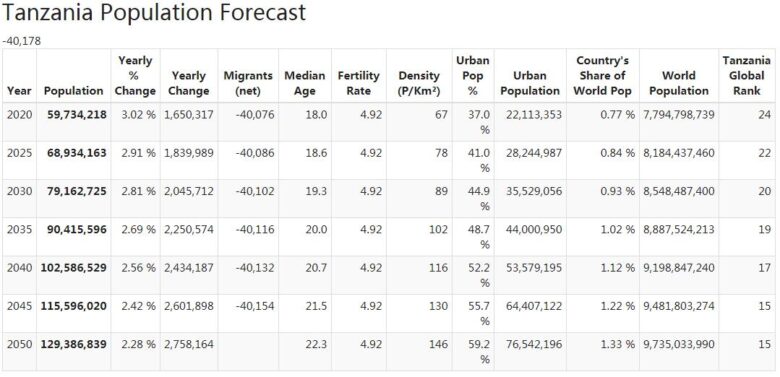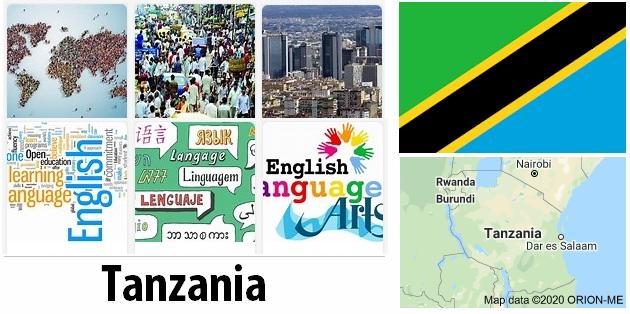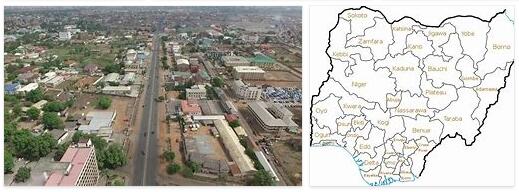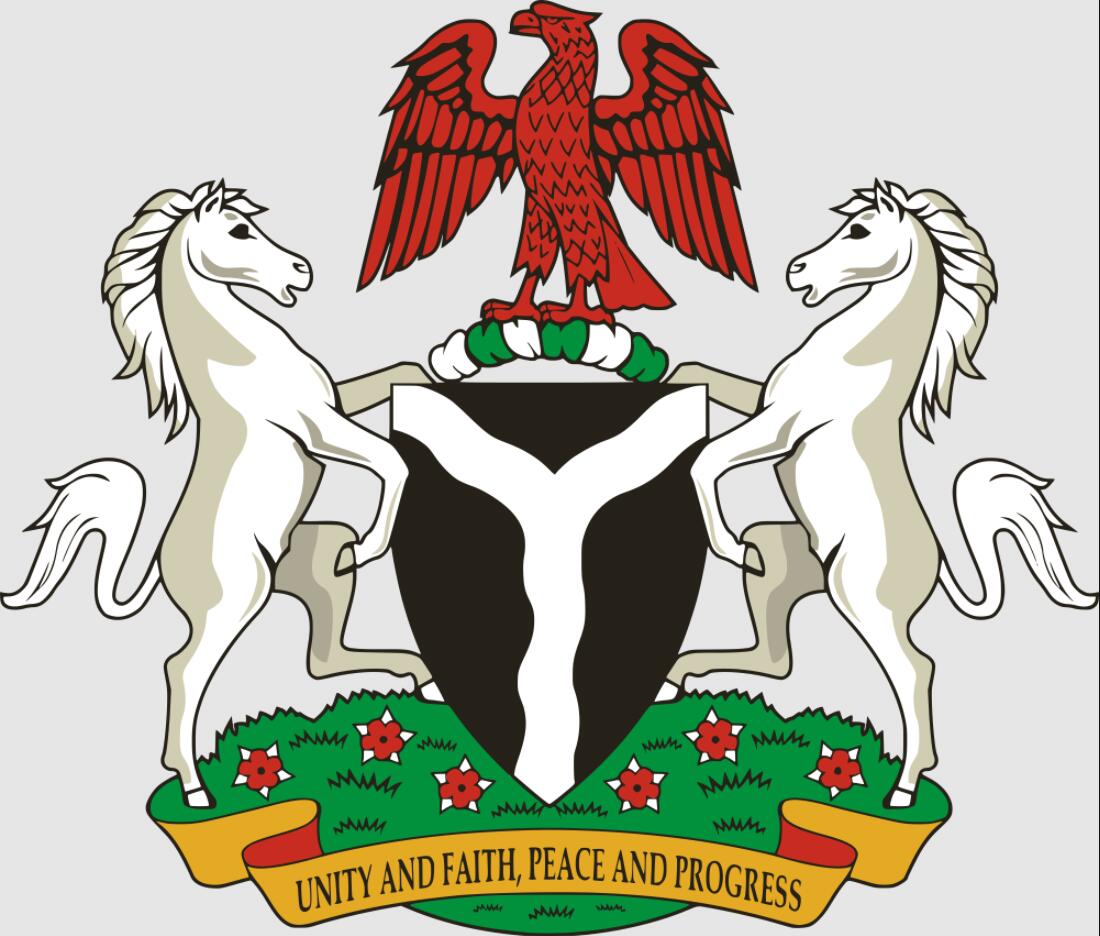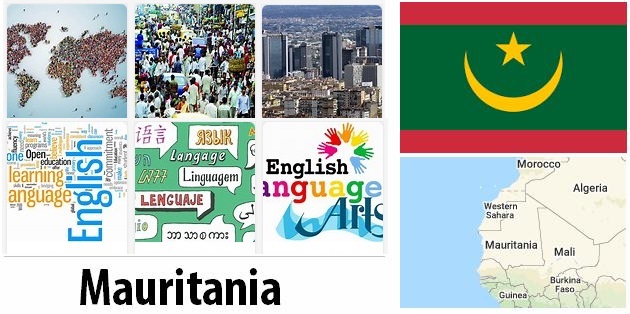Tanzania Population and Language
Ethnic diversity is high in Tanzania, which houses around 120 different peoples. On the mainland, bantu people dominate, of which sukuma is the largest group. On the islands of Zanzibar and Pemba there are both Bantu people and residents of Arab descent. The country has very high birth rates and almost half the population is under 15 years.
Other big bantu people are nyamwezi, makonde, chaga and haya. In northern Tanzania, there are also Nilotic peoples, such as Masai and Cushitic peoples. The country also has smaller groups of Arabs, Asians and Europeans.
- COUNTRYAAH.COM: Key populations estimated size and data of Tanzania, including population density of how many people per square mile. Also included are facts for population and language.
Most of the residents of Zanzibar and Pemba are of African origin, but there is also a group of Arab roots. The Arabs have traditionally depended on trade and were formerly Zanzibar’s upper class. In the islands, there is also a minority of Indian and Pakistani descent.
Few ethnic conflicts
No nation has dominated the others, and few groups have developed strong feelings of ethnic belonging. The country has therefore largely avoided the ethnic conflicts that have been so devastating for several neighboring countries, such as Rwanda. However, since the 1990s tensions between Christians and Muslims have increased (see Religion).
Tanzania has been receiving large numbers of refugees from neighboring countries since the 1970s. During the civil war in Rwanda and Burundi in the 1990s, almost one million people fled to Tanzania. Most of them returned to their homeland, but some became residents of Tanzania, which in 2014 had granted citizenship to around 200,000 Burundians (see Foreign Policy and Defense).
When fighting broke out again in Burundi in 2015, a new wave of refugees came to Tanzania. In March 2019, there were nearly 200,000 Burundian refugees in Tanzania, according to the UN agency UNHCR. At the same time, more than 84,000 refugees from the Congo-Kinshasa stayed in the country since new fighting erupted in their home country.
The population is unevenly distributed across the country. Smaller areas – mainly around Mount Kilimanjaro, along Lake Malawi and south of Lake Victoria – are densely populated. On the inner high plateau, however, few people live. In search of work, many Tanzanians have moved to the coast and the larger cities. But even though townships have quickly grown up around Dar es Salaam, Tanzania is still one of the least urbanized countries in Africa.
Language
The country’s official language is Swahili (or Kiswahili). In practice, English also functions as an official language, used in higher education, the judiciary, commerce and government.
Swahili is a bantu language, which was initially spoken in coastal areas of Tanzania and Kenya. It is the native language of about 15 million people and is spoken as a second language by over 100 million people in eastern Africa. Throughout history, Swahili has been used as a trading language and has been influenced by, among others, Arabic, English, Hindi and Portuguese.
In Tanzania, more than 100 local languages and dialects are also spoken. On the coast and on Zanzibar and Pemba, many speak Arabic.
FACTS – POPULATION AND LANGUAGE
Population
Bantu people 80–85%; in addition, Arab, Nilotic, Cushitic, Asian and European minorities
Number of residents
57 310 019 (2017)
Number of residents per square kilometer
65 (2017)
Percentage of residents in the cities
33.1 percent (2017)
Nativity / birth
38.2 per 1000 residents (2016)
Mortality / mortality
6.7 per 1000 residents (2016)
POPULATION GROWTH
3.1 percent (2017)
fertility rate
5.0 number of births per woman (2016)
Percentage of women
50.5 percent (2017)
Life expectancy
66 years (2016)
Life expectancy for women
67 years (2016)
Life expectancy for men
64 years (2016)
Language
Swahili (kiswahili) is the official language; English is used in higher education and the judiciary
2012
October
New commuter train line opens
A two-line commuter train opens in Dar es Salaam. The hope is that the trains will reduce the traffic chaos around the city during rush hour traffic.
Islamist leaders are charged with riots
Farid Hadi and six other leaders of the Islamist movement Uamsho are being prosecuted for the uprising after the Zanzibar riots. The support for Uamsho is said to have grown after supporters of the CUF left the party disappointed that it formed a coalition government with CCM on the island.
Riot on Zanzibar
A police officer and a civilian are killed during two days of riots in Zanzibar. The unrest begins when Farid Hadi, leader of the Islamist movement Uamsho, is reported to have disappeared. Farid Hadi returns and claims that he was abducted by armed men who said they were police. The police refuse to interfere.
Muslims attack Christians in Dar es Salaam
Muslims attack churches in Dar es Salaam after rumors began spreading that a Christian youngster was violating the Qur’an. About 120 people are arrested by police in connection with the outbreak of violence, including the leader of the Muslim movement Jumuiya ya wa Islamu (Islamic Community), who is accused of inflicting the violence.
July
Many dead in new ferry accident
At least 144 people are killed when a passenger ferry from Dar es Salaam drops off outside Zanzibar.
May
Six ministers dismissed for corruption
President Kikwete dismisses six government ministers on suspicion of corruption. The Office of the Auditor General has discovered gross misconduct with public funds in at least seven ministries. Among the dismissed are the Minister of Finance.
March
Record large natural gas deposits are found
The foreign companies Statoil and ExxonMobil make the largest natural gas discovery to date in Tanzania. The gas field Zafarani off the coast in the south is the largest natural gas discovery made by Statoil outside Norway.
